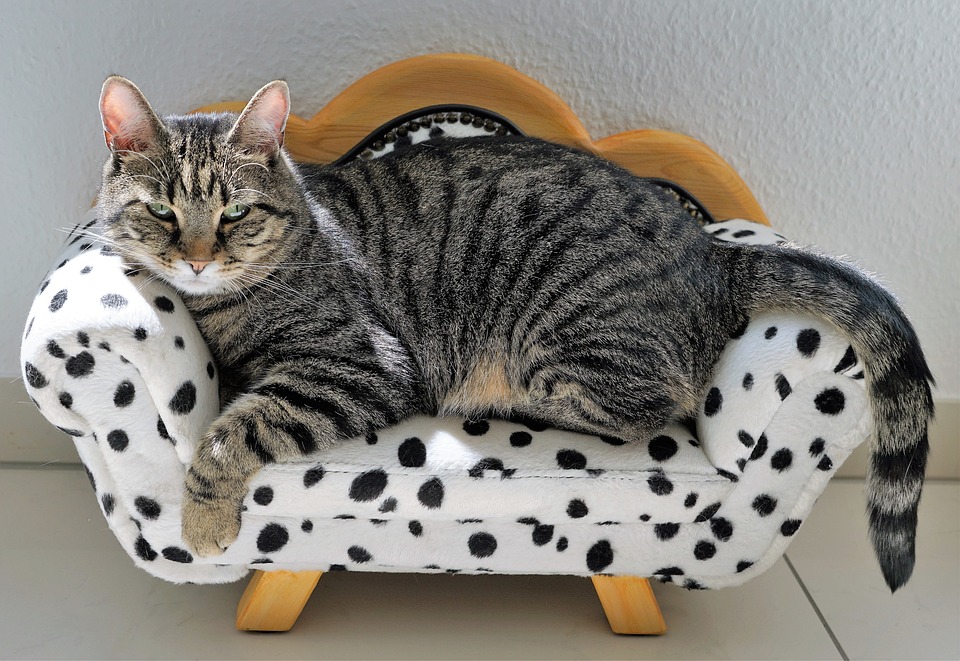Introduction:
In recent years, there has been a concerning rise in obesity among cats, leading to serious health consequences. As a responsible cat owner, it is crucial to understand the causes, risks, and prevention strategies associated with cat obesity. In this article, we will delve into this growing epidemic, providing valuable information to help you ensure your feline friend maintains a healthy weight and overall well-being.
I. What Causes Cat Obesity?
A. Overfeeding and Poor Nutrition
One of the primary causes of cat obesity is overfeeding and poor nutrition. Giving your cat excessive amounts of food, particularly high-calorie treats, can lead to weight gain. Additionally, feeding your cat a diet lacking in essential nutrients can contribute to obesity.
B. Lack of Physical Activity
Cats that lead a sedentary lifestyle and lack regular physical activity are more prone to obesity. Indoor cats, in particular, may have limited opportunities for exercise, leading to weight gain.
C. Genetic Predisposition
Some cats may have a genetic predisposition to obesity, making it more challenging for them to maintain a healthy weight. If you have a breed known to be prone to obesity, such as the Maine Coon or Ragdoll, extra caution should be taken to prevent weight gain.
D. Age and Hormonal Changes
As cats age, their metabolism slows down, making it easier for them to gain weight. Additionally, hormonal changes, such as those that occur after neutering or spaying, can also contribute to weight gain.
II. The Health Risks of Cat Obesity
A. Diabetes Mellitus
Obese cats are at a higher risk of developing diabetes mellitus, a chronic condition that affects the body’s ability to regulate blood sugar levels. This can lead to a range of health issues and require ongoing medical management.
B. Joint Problems and Osteoarthritis
The excess weight carried by obese cats puts additional strain on their joints, leading to joint problems and an increased risk of developing osteoarthritis. This can cause pain, discomfort, and reduced mobility.
C. Heart Disease
Obesity is a significant risk factor for heart disease in cats. The extra weight places an additional burden on the heart, leading to an increased risk of conditions such as hypertension and heart failure.
D. Lowered Immune Function
Obesity can impair a cat’s immune system, making them more susceptible to infections and diseases. This can result in frequent illnesses and a compromised overall health.
E. Decreased Lifespan
Obesity has been linked to a decreased lifespan in cats. The excess weight and associated health issues can significantly impact a cat’s quality of life and longevity.
III. Identifying Cat Obesity
A. Body Condition Scoring
Body condition scoring is a method used to assess a cat’s weight and body composition. It involves evaluating the cat’s body shape, feeling for fat deposits, and assessing their overall muscle tone.
B. Visual and Physical Indicators
Obese cats have a visibly rounded and protruding abdomen, with minimal waist definition. They may also have difficulty grooming themselves and show signs of labored breathing or reduced mobility.
C. Consulting a Veterinarian
If you are unsure about your cat’s weight or suspect they may be obese, it is essential to consult a veterinarian. They can perform a thorough examination and provide expert advice on managing your cat’s weight.
IV. Preventing and Managing Cat Obesity
A. Balanced Diet and Portion Control
Feeding your cat a balanced diet that meets their nutritional needs while controlling portion sizes is crucial in preventing and managing obesity. Consult your veterinarian to determine the appropriate amount of food for your cat based on their age, weight, and activity level.
B. Encouraging Physical Activity
Providing ample opportunities for physical activity is essential for preventing obesity. Engage your cat in interactive play sessions, use toys to encourage exercise, and consider investing in a cat tree or scratching post to promote climbing and jumping.
C. Environmental Enrichment
Creating an enriched environment for your cat can help prevent obesity. Provide scratching posts, hiding spots, and interactive toys to keep your cat mentally stimulated and physically active.
D. Regular Veterinary Check-ups
Regular veterinary check-ups are crucial for monitoring your cat’s weight, overall health, and identifying any potential issues early on. Your veterinarian can provide guidance on maintaining your cat’s weight and offer tailored advice based on their specific needs.
V. Frequently Asked Questions (FAQs)
Below are some commonly asked questions about cat obesity:
Q1. How do I determine the right portion size for my cat’s meals?
A1. The right portion size for your cat’s meals depends on their age, weight, and activity level. Consult your veterinarian for personalized guidance.
Q2. Are certain cat breeds more prone to obesity?
A2. Yes, certain cat breeds, such as the Maine Coon and Ragdoll, are more prone to obesity due to genetic factors. Extra caution should be taken to prevent weight gain in these breeds.
Q3. Can indoor cats be more prone to obesity than outdoor cats?
A3. Yes, indoor cats may be more prone to obesity due to limited opportunities for exercise. It is important to provide indoor cats with ample physical activity and mental stimulation.
Q4. What are some effective ways to encourage physical activity in cats?
A4. Engage your cat in interactive play sessions, provide toys that encourage exercise, and create an enriched environment with climbing structures and scratching posts.
Q5. Should I consult my veterinarian before changing my cat’s diet?
A5. Yes, it is recommended to consult your veterinarian before making any changes to your cat’s diet. They can provide guidance on selecting the appropriate food and portion sizes.
Conclusion:
Cat obesity is a serious concern that can have detrimental effects on your feline companion’s health and well-being. By understanding the causes, risks, and prevention strategies associated with cat obesity, you can take proactive measures to ensure your cat maintains a healthy weight. Remember, a well-balanced diet, portion control, regular exercise, and veterinary guidance are key to keeping your cat fit and thriving. Act now to combat this growing epidemic and safeguard your feline friend’s future.








